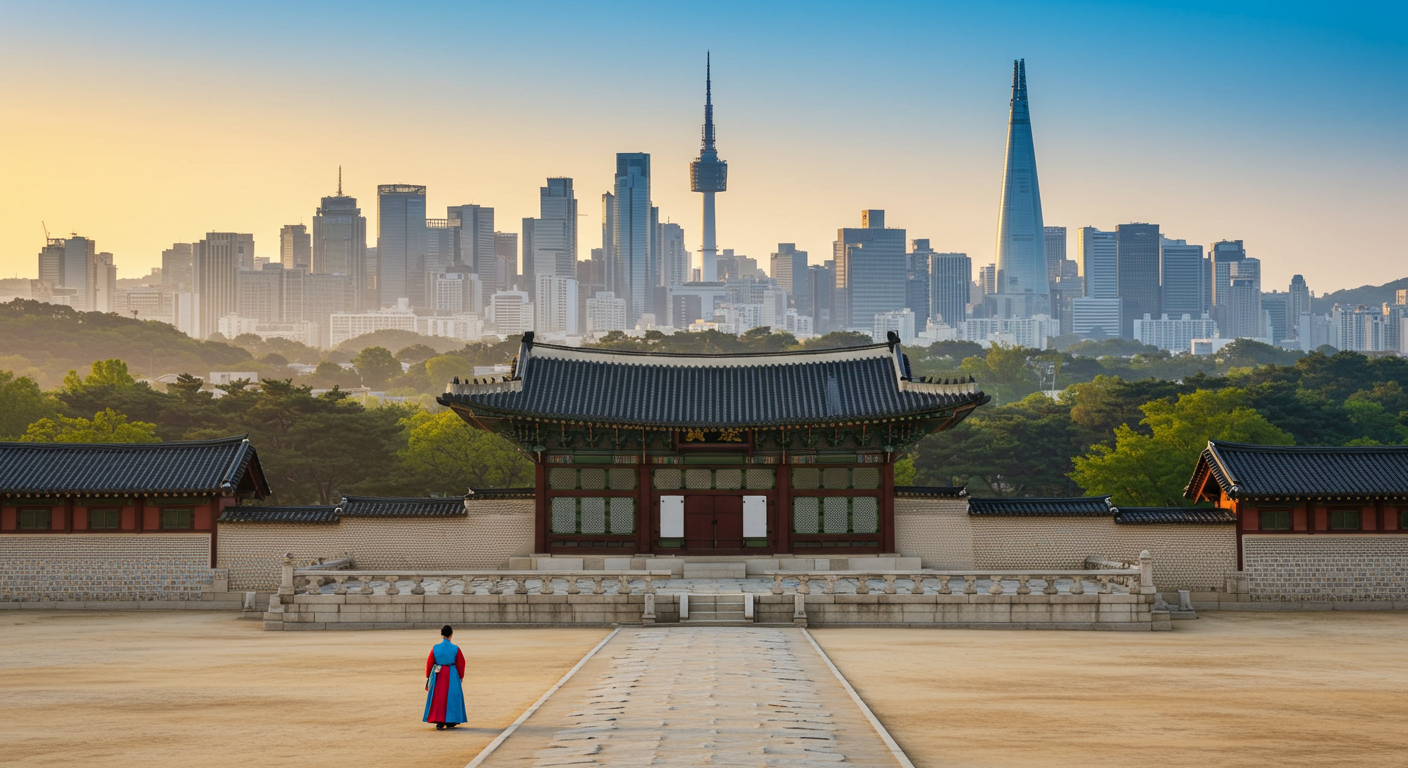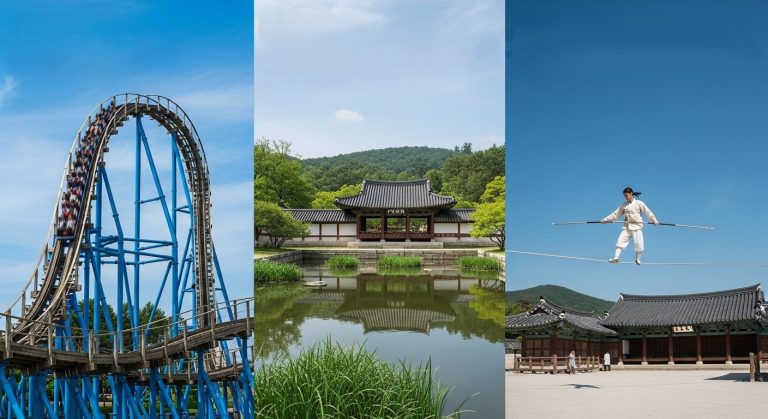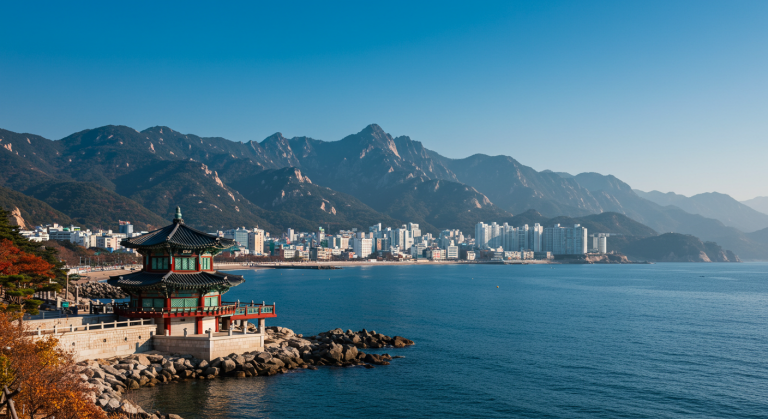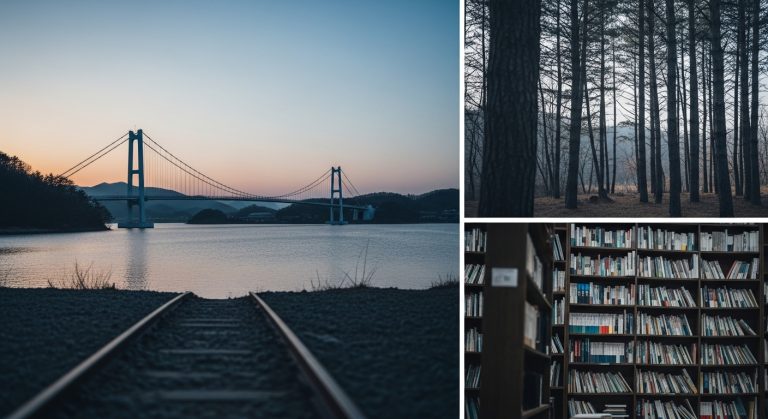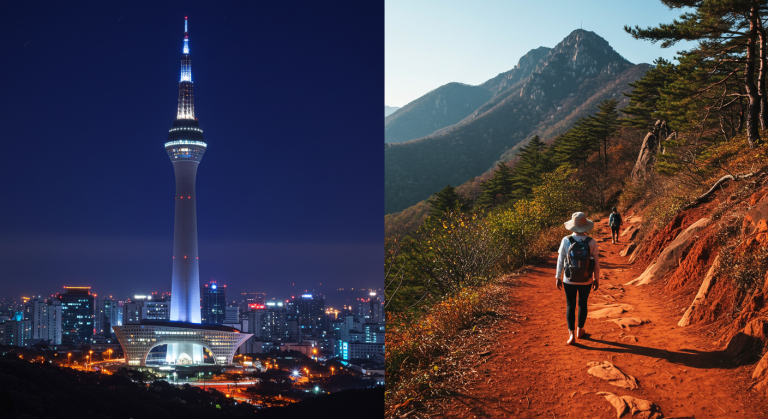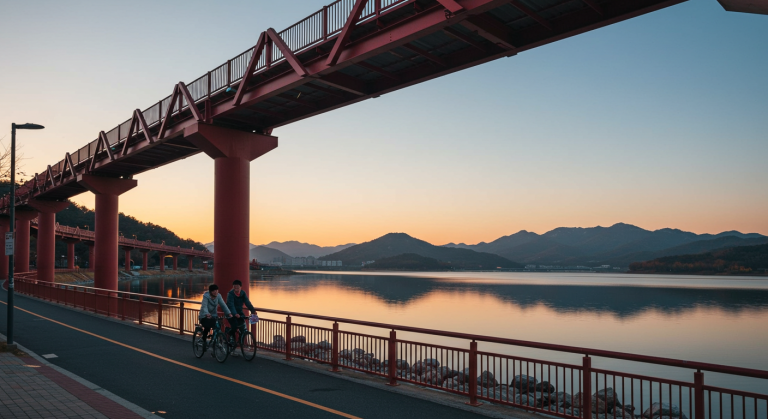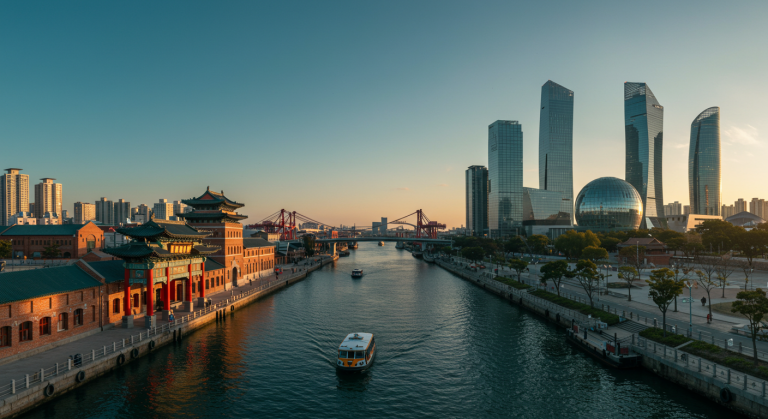Korea’s Coastal Gem: Everything You Need to Know for Your Gangneung Trip
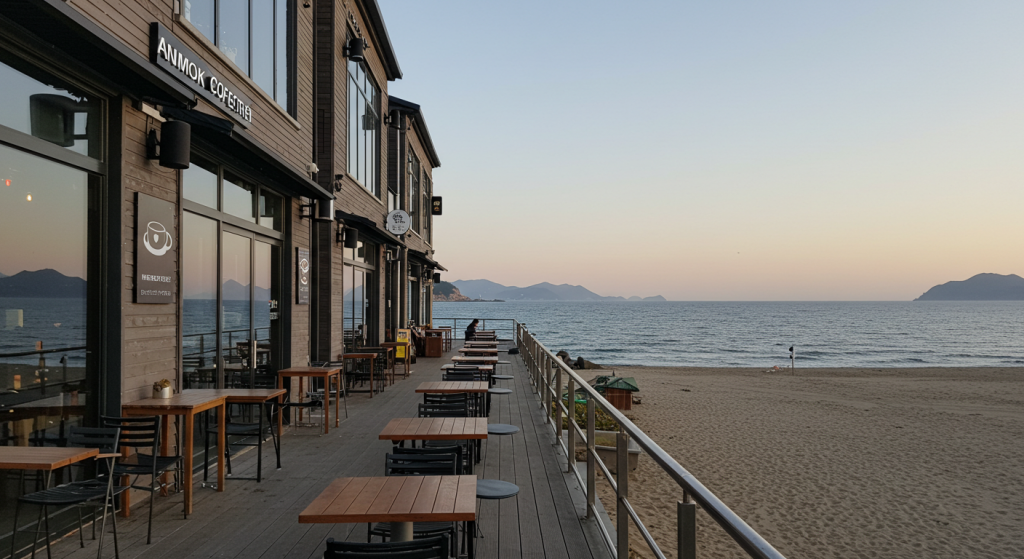
Tired of the urban rush?
Discover the serene beaches, deep-rooted history, and world-class coffee culture of Gangneung, the ultimate East Sea escape.
This extensive guide is your blueprint for a perfect, deeply satisfying South Korean coastal journey.
Have you ever felt that intense, overwhelming urge to escape the relentless concrete jungle and find a place where the sky feels bigger and the air tastes cleaner?
I certainly have, and for years, I searched for that perfect blend of nature, culture, and, let’s be honest, amazing food, all wrapped up in a package that felt distinctly Korean yet refreshingly unique.
That journey eventually led me to **Gangneung** (강릉), a city nestled on the eastern coast of Gangwon Province, and honestly, it changed my entire perspective on Korean travel.
It’s not just another coastal city; it’s a destination that effortlessly marries the azure beauty of the East Sea with centuries of profound history and, surprisingly, a thriving, world-class coffee scene.
When I first stepped onto **Anmok Beach**, the sheer volume of boutique coffee houses lining the shore told me I wasn’t in an ordinary spot.
The scent of fresh espresso mixing with the salty ocean air was intoxicating, a sensory experience I still vividly recall.
This guide is born from my own deep explorations and discoveries, designed to cut through the noise and give you the comprehensive, human-like itinerary you need to experience the absolute best of Gangneung.
From chasing the first sunrise at Jeongdongjin to sipping a perfectly brewed hand drip and walking the ancient grounds of Korea’s most famous literary family, we’re covering it all—so pack your bags and your travel curiosity! 🗺️😊
Part I: The Azure Heart: East Sea Beaches and Coastal Charms 🌊
The primary reason anyone visits Gangneung is, without a doubt, the ocean.
Unlike the yellow-tinged waters of the West Sea, the East Sea (Donghae) boasts a startling, deep **azure blue** that genuinely takes your breath away.
The coastline here is dramatically beautiful, featuring everything from sprawling, sandy beaches perfect for sunbathing to rugged, rocky cliffs ideal for thoughtful contemplation.
But choosing which beach to visit can be tough, as each one offers a unique flavor of the coastal experience, so let me break down the essentials for you.
**Jeongdongjin: Sunrise, Time Travel, and Dramatic Cliffs**
**Jeongdongjin** is probably the most famous seaside spot in Gangneung, renowned globally for being the closest spot to Seoul for viewing the spectacular New Year’s Day sunrise.
The literal translation of its name refers to it being “precisely east of Gwanghwamun Gate in Seoul,” cementing its historical and geographic significance.
What truly makes Jeongdongjin iconic is its tiny, picturesque train station, which is listed in the Guinness Book of World Records as the railway station closest to the sea.
Standing there as the train pulls up, with the rhythmic crash of the waves just meters away, is an incredibly cinematic moment that I highly recommend you experience at least once.
You can’t talk about Jeongdongjin without mentioning the massive, ship-shaped hotel perched dramatically atop the cliff. This structure, the **Sun Cruise Resort**, is a landmark in itself and offers arguably the best sunrise views. Booking a room there is pricey, especially during peak seasons like New Year’s, but just visiting its observation deck is well worth the small fee for the panoramic vista it offers. Be sure to check out the adjacent sculpture park, too!
**Gyeongpo Beach & Lake: Seasons of Serenity**
Moving north, we arrive at the heart of Gangneung’s natural beauty: the **Gyeongpo Lake** (경포호) and its adjacent **Gyeongpo Beach** (경포해변).
This area encapsulates the concept of harmony, with the peaceful freshwater lake separated from the dynamic saltwater ocean by a thin strip of land.
The lake is famous for the **Gyeongpodae Pavilion**, a historical structure that offers an unparalleled view of the surrounding landscape, especially during the spring when the cherry blossoms are in full bloom.
Local lore says that on a clear night, you can see five moons reflected here: the moon in the sky, the moon in the lake, the moon in the sea, the moon in your cup of wine, and the moon in the eyes of your beloved.
I spent an entire afternoon simply cycling around the lake path—it’s about a 4-kilometer loop—and found it profoundly relaxing.
The change in scenery from the dense pine forest to the expansive lake surface is a photographer’s dream and a soul’soothing reality.
**Deep Dive: The Significance of Gyeongpodae**
The Gyeongpodae Pavilion itself dates back to the 14th century, but its current structure largely reflects a 17th-century rebuild.
It was a favorite spot for many historical figures, including the esteemed **Yulgok Yiyi**, whose mother, Shin Saimdang (we’ll talk about her later!), spent much of her life nearby.
The calligraphy adorning the pillars is beautiful, but the true masterwork is the view, which changes dramatically with the hour and the season.
- **Spring:** Cherry blossoms framing the lake.
- **Summer:** A popular swimming spot along the beachfront.
- **Autumn:** Vibrant crimson and gold foliage surrounding the lake.
- **Winter:** A quiet, reflective landscape, often dusted with snow.
If you visit Gyeongpo Beach during the peak summer months (late July to mid-August), prepare for crowds. Finding parking can be difficult, and the beach will be packed with colorful umbrellas. For a calmer experience, aim for the shoulder seasons (May/June or September/October) when the weather is still pleasant but the massive influx of holidaymakers has subsided.
Part II: The Aroma of the East: Gangneung, the Coffee City ☕️
Here’s a secret about Gangneung that many first-time visitors miss: it is the undisputed **coffee capital of South Korea**.
This isn’t just a marketing slogan; it’s a deep-seated cultural identity that started with the very first-generation Korean baristas and roasters who chose this peaceful coastal town as their base.
The city hosts the annual Gangneung Coffee Festival, has a dedicated Coffee Museum, and, most importantly, boasts a coffee street with a concentration of specialty cafes found nowhere else in the country.
It’s a true paradise for anyone who takes their morning brew seriously—or even just enjoys a beautiful latte with an ocean view.
**Anmok Coffee Street: A Cultural Phenomenon**
**Anmok Beach Coffee Street** (안목해변 카페거리) is the epicenter of this caffeine culture.
Imagine a beautiful, clean beach, and instead of the usual seaside vendors, you find over twenty multi-story cafes, each with its own unique roasting profile and interior design, all facing the limitless horizon.
The history of this street is fascinating; it really took off in the early 2000s when first-generation baristas, seeking an escape from the Seoul hustle, settled here and opened their original workshops and cafes.
They prioritized the craft, the beans, and the unique connection to nature, fostering a community that valued quality over quantity.
Today, you can walk along the boardwalk, feeling the ocean breeze, and choose a different specialty coffee experience every hour of the day.
Whether you prefer a rich, dark roast or a bright, fruity single-origin hand drip, you will find a master to satisfy your palate.
**Choosing Your Roaster: A Quick Comparison**
| Roaster Name | Signature Style | Best For | Vibe Score (1-5) |
|---|---|---|---|
| **Terarosa (테라로사)** | Industrial, large-scale roasting, consistently excellent quality. | The dedicated coffee enthusiast; trying unique, high-end single-origins. | 4.5 |
| **Bohemian Park Yi Choo Coffee (보헤미안)** | Legendary, traditional hand-drip masters, deeply rooted history. | The coffee purist; a masterclass in classic Korean coffee art. | 5.0 |
| **Bossa Nova (보사노바)** | Multi-story Anmok cafe with stunning rooftop seating and views. | The visual traveler; perfect for that iconic ocean-view selfie. | 4.0 |
| **E.T. Coffee (이티커피)** | Known for its rich, bold espresso-based drinks and great desserts. | The latte lover; a fantastic spot to grab a simple, quality daily cup. | 3.8 |
The sheer variety is staggering, and I could write a 5,000-word article just on the coffee scene alone, detailing the nuances of roasting temperatures and bean origins.
However, the most important advice I can give is simply to walk the street, pick the cafe with the exterior that calls to you the most, and settle in for a while.
I recall one rainy morning at a small, unassuming spot just off the main drag, where the owner, a man with hands stained by years of coffee work, served me a Colombian pour-over so complex and bright it felt like a religious experience.
It’s those unexpected discoveries, facilitated by the city’s commitment to craft, that truly define the Gangneung coffee journey.
Gangneung offers a “Coffee Stamp Tour” where you can collect stamps from participating cafes. Completing the tour often gets you a small prize or certificate. It’s a brilliant way to motivate yourself to explore the wider coffee scene beyond Anmok and find truly hidden gems in the city center and surrounding hills.
Part III: Footprints of History: Ojukheon and Literary Heritage 📜
After you’ve had your fill of sea and caffeine, it’s time to delve into Gangneung’s deep, scholarly history.
This city is not just a seaside resort; it’s the birthplace of two of the most revered figures in Korean history and Confucian philosophy: **Shin Saimdang** (신사임당, 1504–1551) and her son, **Yulgok Yiyi** (율곡 이이, 1536–1584).
If those names sound familiar, it’s because they grace South Korea’s major currency notes: Shin Saimdang on the 50,000 won bill and Yulgok Yiyi on the 5,000 won bill.
Visiting their ancestral homes is less about history lessons and more about stepping into a tranquil, beautifully preserved world of Joseon Dynasty aristocratic life.
**Ojukheon House: The Black Bamboo Sanctuary**
**Ojukheon** (오죽헌) is a magnificent site, famous for being the house where Yulgok Yiyi was born and where Shin Saimdang, his mother, spent her most creative years.
The name “Ojukheon” literally means “**Black Bamboo House**,” referring to the rare species of dark-stemmed bamboo that still grows abundantly around the buildings today.
This complex is one of the oldest wooden residential buildings in Korea and perfectly embodies the simplicity and elegance of traditional architecture.
As you walk through the courtyards, you can easily imagine the scholarly intensity and artistic devotion that permeated the family’s life here.
Shin Saimdang was not merely the mother of a great scholar; she was a renowned artist, poet, and calligrapher in her own right—an extraordinary achievement for a woman of the Joseon era.
Her work, particularly her delicate paintings of nature, remains a testament to her genius and is celebrated as a national treasure.
**Seongyojang House: The 99-Kan Aristocratic Mansion**
A short distance from Ojukheon lies **Seongyojang** (선교장), often described as the most beautifully preserved example of a Joseon Dynasty upper-class residence.
It was built in the early 18th century by a prominent family and has been continuously inhabited by their descendants, which gives the place a wonderfully lived-in, authentic feel.
The grounds are sprawling, featuring intricate wooden buildings, quiet courtyards, and a truly magical lotus pond.
The highlight for me was the **Hwallaejeong Pavilion**, a separate structure built on the pond that feels like a perfect place to retreat and write poetry—or, in our modern terms, just enjoy a moment of peace.
**Case Study: The Zen of Hwallaejeong**
In my personal experience, visiting Hwallaejeong during a mild autumn afternoon was the most meditative part of my entire Gangneung trip.
The way the shadows fell across the gray-tiled roof and the gentle rustle of the dry reeds created an atmosphere of profound tranquility.
This small pavilion perfectly illustrates the Joseon aesthetic philosophy: beauty is found in subtlety, nature, and the careful harmony between man-made structures and the environment.
- **Architectural Note:** Notice the open structure, designed to allow maximum light and air circulation.
- **Seasonal Tip:** Best viewed in summer when the lotus flowers are blooming or in late autumn for a quiet, philosophical atmosphere.
Part IV: A Taste of Gangneung: Culinary Deep Dive 🍲
No trip is complete without diving headfirst into the local food scene, and Gangneung serves up a unique coastal menu that you won’t find replicated easily elsewhere.
The food here is fresh, hearty, and deeply connected to its maritime and mountain surroundings.
We’re talking about two main pillars: incredibly fresh seafood straight from the East Sea and the surprisingly delicate flavor of **Chodang Tofu**.
Getting these two right is the key to culinary success in the city.
**Chodang Tofu Village: A Local Delicacy**
The **Chodang Tofu Village** (초당순두부마을) is a collection of restaurants specializing in *sundubu* (soft tofu stew), but with a twist unique to Gangneung.
The secret ingredient isn’t some rare herb, but the water itself.
Instead of using traditional brine (saltwater), the tofu here is set using pure **sea water** pumped directly from the East Sea.
This technique imparts a subtle, clean salinity to the tofu, making it uniquely smooth and flavorful, perfect for a gentle, healthy meal.
**The Perfect Tofu Experience**
- **Menu 1: Haemu Sundubu (해물순두부):** Soft tofu with assorted seafood (clams, shrimp, sometimes crab). This is a great savory option.
- **Menu 2: Haemul Jjamppong Sundubu (해물짬뽕순두부):** Tofu stew flavored with spicy seafood soup (Jjamppong). This is the modern, fiery favorite.
- **Menu 3: Kongbiji (콩비지):** A side dish of tofu dregs, often served creamy and warm. Don’t skip it!
**Total Verdict:** Start with the original white *Haemu Sundubu* to truly appreciate the delicate sea salt flavor before diving into the spicier variations.
**Jungang Market: Street Food Nirvana**
For a more rustic, street-food-focused adventure, the **Gangneung Jungang Market** (강릉 중앙시장) is mandatory.
It’s a sensory overload in the best possible way, mixing traditional market stalls with modern, specialized gourmet vendors.
Beyond the standard Korean market fare, Gangneung has developed some unique specialties here, particularly the **Ojingeo Sundae** (Squid Sausage) and the incredibly popular **Seafood Croquette**.
Trying to navigate the market can be overwhelming, so here is a suggested itinerary to maximize your market crawl.
**Case Example: The Gangneung Jungang Market Food Tour**
**The Scenario:** You arrive at 5 PM, hungry but needing to save room for dinner.
- **Stop 1: The Squid Sausage Stand (Ojingeo Sundae):** This regional dish features squid stuffed with a savory filling of rice, vegetables, and sometimes minced pork, then steamed or pan-fried. A half portion is usually plenty for two people.
- **Stop 2: The Croquette Shop (Seafood Croquette):** Look for the long line! These deep-fried pastries are filled with creamy mashed potato and chunks of fresh seafood. Hot, crispy, and savory—a perfect market snack.
- **Stop 3: Ice Cream Hoddeok:** A warm, sweet pancake (Hoddeok) stuffed with brown sugar and nuts, split open, and then topped with a generous scoop of vanilla ice cream. The hot/cold, sweet/salty combination is pure genius.
**Final Goal:** Spend no more than 15,000 KRW and leave completely satisfied, but not stuffed. This itinerary achieves just that!
Gangneung is famous for its *Hwae* (raw fish/sashimi). While absolutely delicious, only consume raw seafood from busy, reputable restaurants, especially those right at the order docks (like Jumunjin Port). Never buy Hwae from a source that looks questionable or appears to have insufficient refrigeration. Freshness is key to safety!
Part V: Planning Your Perfect Getaway: The Vibe Budget 🧮
To make this trip a reality, let’s look at the financial side.
Gangneung can be done on a backpacker’s budget or a luxury splurge, but a mid-range approach often strikes the perfect balance between comfort and experience.
The biggest variables are accommodation, transportation (KTX train vs. self-driving), and, crucially, your coffee consumption!
Since Gangneung is the coffee capital, budgeting for at least two specialty coffees per day is highly encouraged.
**🔢 The Gangneung Vibe Budget Calculator**
*Use this simple tool to estimate your daily spending in Gangneung (excluding KTX/major transport). All results are approximations in KRW.*
Remember, this calculator gives you a base estimate.
Your true "vibe budget" should also include KTX train tickets (which can be over 100,000 KRW round-trip from Seoul) and shopping for coffee beans and local crafts.
For a truly deep dive into the coffee scene, for instance, you might allocate an extra 10,000 KRW per day to buy bags of roasted beans directly from the master roasters—an investment I promise you won’t regret!
Traveling efficiently is key, and using local buses or renting a small scooter can often be more cost-effective than constant taxi rides, especially around the spread-out coastal areas.
Part VI: Final Vibe Check: Key Takeaways and Summary 📝
We’ve covered a lot of ground, from the deep blue of the East Sea to the black bamboo of Ojukheon and the nuanced flavors of specialty coffee.
Gangneung is a city that rewards the patient, curious traveler with a unique blend of experiences that speak to both the modern and historical soul of Korea.
**Visual Summary: Gangneung Essentials**
The Gangneung Travel Checklist
So, if you’re looking for a destination in South Korea that offers a genuine sense of escape—a place where you can find profound peace by the ocean and intellectual stimulation in its historical alleys—Gangneung is the answer.
Don't just tick off the famous spots; let the city's calm, blue-gray professional vibe wash over you.
Thank you for joining me on this detailed exploration.
I truly hope this guide inspires you to book that KTX ticket and discover your own favorite corner of this wonderful coastal town.
If you have any questions about specific travel routes, favorite cafes, or tips on finding the best *Ojingeo Sundae*, please don't hesitate to ask in the comments below! Happy travels! 😊
